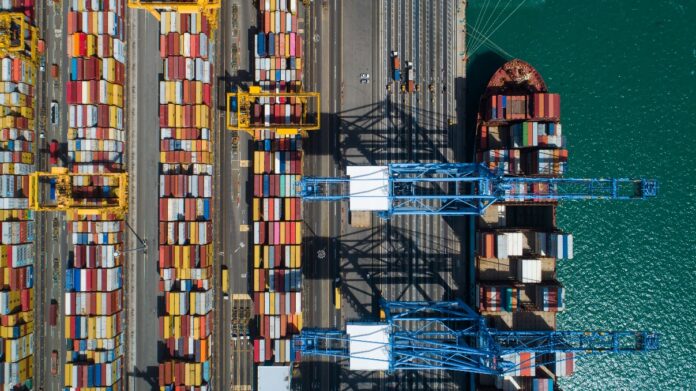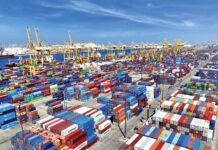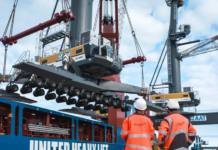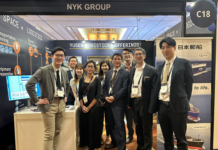
New research reveals optimism prevails among businesses across Asia Pacific (APAC), leveraging technology and reconfiguring their supply chains to navigate continuing geopolitical and economic uncertainty.
The latest Trade in Transition research, commissioned by leading global intelligent logistics solutions provider DP World and led by Economist Impact, captured the perspectives of trade experts and senior executives globally. Unveiled at the World Economic Forum (WEF) in Davos earlier this week, the report found that the primary driver of optimism in APAC is a growing belief that technology will transform the efficiency and resilience of supply chains. In the face of political instability, high inflation and interest rates, and economic downturns in key markets, businesses also implement friend-shoring and dual supply chain strategies to manage risk across their operations.
Glen Hilton, CEO & Managing Director for DP World in Asia Pacific, said: “Asia Pacific’s imports and exports are projected to grow over 5% in 2024 – the fastest, globally. The report makes clear that intra-Asian trade is critical to ensuring that businesses continue to develop and prosper in the region, and technology will play a critical role. We will accelerate our investment and forge strategic partnerships to strengthen and expand our offerings to help businesses achieve their regional growth ambitions.”
Technology spurs optimism in Asia Pacific supply chains
When asked to assess the future of global trade, 32% of APAC business leaders cited technology’s ability to improve supply chain efficacy and resilience as their main reason for optimism. 27% also expect technological upgrades to serve as primary growth drivers for their companies’ imports.
At the core of these positive sentiments is the increasing adoption of Artificial Intelligence (AI). 99% of APAC businesses are using AI to revolutionise at least one aspect of their supply chain management, including:
• Streamlining operating costs (cited by 34% of respondents);
• Improving resource planning to reduce supply chain disruptions (31%); and
• Identifying new sources of demand (29%).
Due to an ever-changing operating environment, businesses are set to proactively ramp up their technological adoption in 2024, underscoring a commitment to innovate. 39% prioritise increasing research and development efforts to enhance products, services and supply chain operations. Of those surveyed in APAC:
• 32% are poised to incorporate advanced automation and robotics to amplify logistical efficiencies,
• 27% intend to embrace augmented or virtual reality for troubleshooting and repairs, and
• 25% will integrate blockchain technology to enhance traceability, security, and data protection.
Supply chains adapt as economic and geopolitical tensions persist
Among APAC executives, the enduring threat of inflation was cited by 28% as their main concern over the next two years. Additionally, 26% expressed fears of economic downturn in key markets where they operate. In response to economic headwinds, more APAC businesses are restructuring their supply chains, with 24% opting for fewer suppliers – a 13 percentage point increase from the previous year. Many more are also looking within Asia for trade opportunities, with 30% of APAC executives stating Southeast Asia is one of their primary export markets.
Beyond economic fears, geopolitical tensions also weigh heavily on executives’ minds. Economist Impact conducted a quantitative trade analysis through the Global Trade Analysis Project (GTAP) platform to estimate the potential global output loss from hypothetical scenarios of further ‘geo-economic fragmentation.’ In a scenario focused on significantly increased trade barriers on high-tech goods – a focal point in the current geopolitical climate – the GTAP modelling projected a 0.9% decline in worldwide GDP.
In APAC, nearly a quarter of businesses express concerns about political instability in sourcing markets. Almost a fifth cite worries about heightened geopolitical uncertainty, with ongoing events such as the war in Ukraine and tensions between the US and China. To mitigate risk, a third are utilising friend-shoring, while a similar proportion says that they are establishing parallel supply chains or employing dual sourcing.
Supply chain diversification is particularly evident in APAC, with more and more businesses adopting a ‘China+1’ strategy. Countries like Malaysia, Thailand, and Vietnam, which firms see as lower-risk production destinations, benefit from this trend. However, despite many businesses indicating that they are diversifying supply chains away from China, manufacturing levels in the world’s second-largest economy remain robust, demonstrating the nuanced nature of supply chain dynamics in the region.
อัพเดตข่าวสารและบทความที่น่าสนใจในอุตสาหกรรมโลจิสติกส์ก่อนใคร ผ่าน Line Official Account @Logistics Mananger เพียงเพิ่มเราเป็นเพื่อน @Logistics Manager หรือคลิกที่นี่














